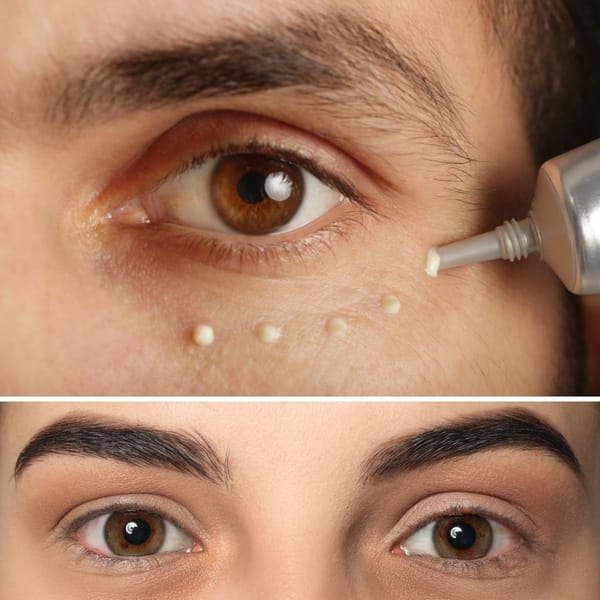Key Takeaways:
- Understand the concept of armpit detox and if natural deodorants facilitate this process.
- Learn about the differences between conventional and natural deodorants and their effects on sweat glands and body odor.
- Discover practical tips for transitioning to natural deodorants and maintaining underarm health.
The debate on whether natural deodorant detoxes your armpits has been a buzzing topic in the wellness community. With concerns over harmful chemicals in conventional deodorants and their potential links to health issues like breast cancer and Alzheimer's disease, many are turning to natural alternatives. But does making the switch to natural deodorant actually lead to a detoxification process? Let's explore the science and myths behind this claim.
Understanding Armpit Detoxes
The term "armpit detox" refers to the belief that switching from conventional to natural deodorants can help remove toxins from the sweat glands in your underarms. Proponents of armpit detoxes claim that natural deodorants, free from aluminum and other chemicals, allow your body to expel impurities that have been blocked by sweat-blocking antiperspirants.
The Role of Sweat Glands
Sweat glands are crucial for temperature control, and they also play a role in expelling waste products. However, the idea that sweat can remove toxins in a way that significantly impacts health is not strongly supported by scientific evidence. The primary function of sweating is to regulate body temperature, not detoxification.
Conventional Deodorants vs. Natural Deodorants
Conventional deodorants often contain aluminum-based compounds that temporarily block pores to prevent sweating. On the other hand, natural deodorants typically use ingredients like baking soda, coconut oil, and essential oils to neutralize odor-causing bacteria and absorb moisture without blocking sweat glands.
The Science Behind Body Odor
Body odor is caused by bacteria on the skin breaking down sweat into acids. Natural deodorants aim to reduce the number of odor-causing bacteria, while some also contain ingredients like exfoliating acids to remove dead skin cells that can harbor these microbes.
Transitioning to Natural Deodorant
When switching to natural deodorant, some people experience a "detox phase" where body odor and sweat may temporarily increase. This is often due to the body adjusting to the lack of sweat-blocking agents and can last from a few days to even a week.
Ingredients in Natural Deodorants
Natural deodorants often include ingredients like bentonite clay, apple cider vinegar, and baking soda, which are believed to help absorb impurities and keep the underarms smelling fresh. These ingredients also help maintain the natural pH balance of the skin.
The Armpit Microbiome
Switching to natural deodorant can alter the armpit microbiome. Studies have shown that natural deodorant users tend to have fewer staphylococci microbes, which are associated with less body odor. This shift in bacteria can be part of the adjustment process when transitioning to natural products.
Practical Tips for Detoxing Armpits
To aid the transition to natural deodorant, some suggest using clay masks or apple cider vinegar to help draw out impurities. These methods can mimic a detox by cleaning the pores and removing dead skin cells, but they do not remove toxins in the traditional sense.
Maintaining Underarm Health
Regular hygiene practices, such as washing with a wet washcloth and showering regularly, are essential for keeping the underarms clean. Exfoliating can also help remove dead skin cells and prevent the buildup of odor-causing bacteria.
The Myth of Aluminum and Health Risks
While some fear that aluminum in antiperspirants could be linked to breast cancer or Alzheimer's disease, current research does not conclusively support these claims. However, many choose aluminum-free options to avoid any potential risks.
Natural Deodorant and Skin Irritation
Some individuals may experience irritation from natural deodorants, especially those with baking soda. If irritation occurs, it's important to stop using the product and consult with a dermatologist to find a suitable alternative.
The Detox Myth Debunked
Ultimately, the concept of detoxing through the use of natural deodorants is more myth than reality. The body has its own efficient detoxification systems, such as the liver and kidneys. While natural deodorants can help reduce exposure to certain chemicals, they do not detox the armpits in the way some claims suggest.
Summary
The idea that natural deodorant detoxes your armpits is a popular notion, but it lacks strong scientific backing. While natural deodorants can help reduce the presence of odor-causing bacteria and avoid potential irritants found in conventional products, they do not detox the body in the traditional sense. The transition to natural deodorant may involve an adjustment period, but it is more about allowing the body to sweat naturally and maintain a balanced underarm microbiome than about removing toxins. Regular hygiene and choosing the right natural deodorant for your skin type are key to smelling fresh and feeling confident.
FAQ Section
Q: How long does the transition period to natural deodorant last? A: The transition period can vary from person to person, but it typically lasts from a few days to a few weeks. During this time, you may notice an increase in sweat and body odor as your body adjusts to the natural deodorant.
Q: Can natural deodorants cause skin irritation? A: Yes, some individuals may experience irritation, especially from ingredients like baking soda. It's important to test a small area of skin first and consult with a dermatologist if irritation persists.
Q: Are there any health risks associated with aluminum in conventional deodorants? A: While there have been concerns about the potential health risks of aluminum, current research does not conclusively link aluminum in antiperspirants to health conditions like breast cancer or Alzheimer's disease. However, many people choose aluminum-free deodorants to avoid any potential risks.







